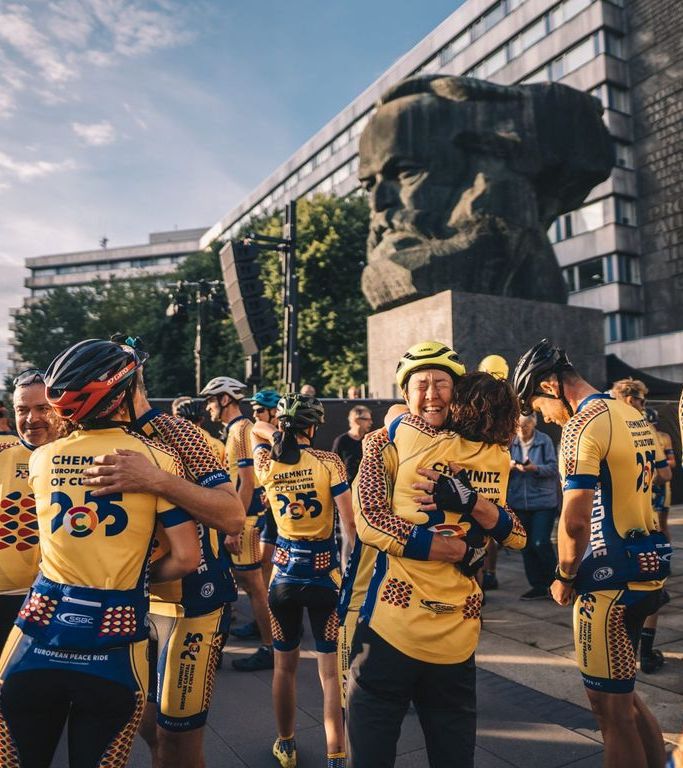
With peaceful intentions – the 2022 European Peace Ride
In its day, the International Peace Ride was the best-known amateur cycling event behind the Iron Curtain. At its height, it even drew comparisons with the famed Tour de France. How contemporary is the idea of a “reloaded” Peace Ride these days? And what’s the connection with Chemnitz?
Sadly, the Peace Ride idea is more resonant than ever right now, with the ongoing armed conflict in Ukraine. Then as now, the goal was to take a stand for peace through sports as a way of connecting people internationally. Back then, it was about defusing the tensions of the Cold War. Chemnitz, or Karl-Marx-Stadt as it was then known, marked the end of a stage or the finish line multiple times on the tour, which crisscrossed Eastern Europe, so the city has a longstanding connection with the event.
Can you tell us a little about the International Peace Ride?

What new impact do you hope the European Peace Ride will have?
Unlike the International Peace Ride, the European Peace Ride doesn’t have specific stages. Instead, its aim is to highlight people’s commonalities in Europe through sports, for once not culminating in competition against each other. It’s not about being the first to cross the finish line. It’s about getting to the home stretch together. Our goal is to focus on mutual understanding in Europe, the idea of bringing people together across national borders, but also values such as equal rights and inclusion. You can also see that from the field of participants. We have about 120 athletes signed up. They come from Poland, the Czech Republic, and Saxony, including ten para-athletes, with men and women alike participating.
Like its predecessor, the European Peace Ride is an amateur cycling event. How challenging is the course?
Quite challenging, I’d say! The first stage alone involves cycling 232 kilometers, with over 2,000 meters in elevation gain. The participants will have to average a speed of 28 kilometers per hour. That requires a certain level of fitness, so it’s more likely to appeal to ambitious cyclists. Overall, we're talking about a distance of over 430 kilometers and more than 4,500 meters of elevation gain.
Thanks for speaking with us today. We hope the event is a big success and that the weather holds up!

